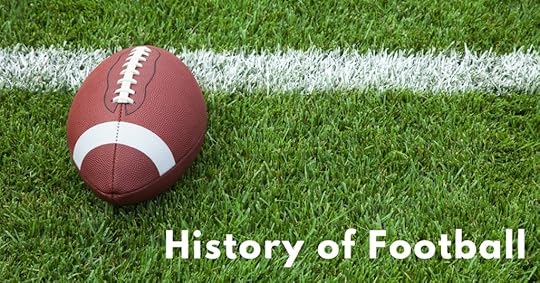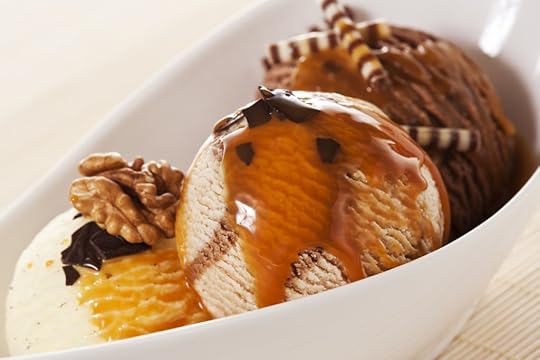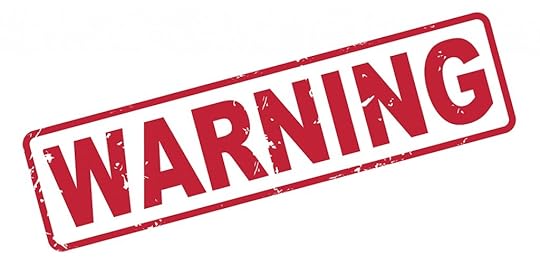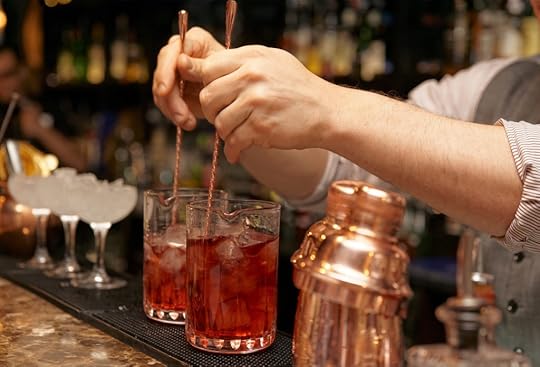Bathroom Readers' Institute's Blog, page 72
November 17, 2016
Ask Uncle John Anything: Why Is “Pants” Plural?
Uncle John knows pretty much everything—and if he doesn’t, he heads his massive research library, or puts one of his many associates on the case. So go ahead: In the comments below, ask Uncle John anything. (And if we answer your question sometime, we’ll send you a free book!)
Pants are a singular object. Then why do we say “pants” instead of “pant”?
It’s a common vagary of the English language that pants—or trousers, slacks, khakis, shorts—is always presented as a plural. It’s never pant, but rather a pair of pants. Always in the multiple. But why? Pants are clearly a single object. One could argue that they have two separate areas for one’s legs to go. Or because legs are themselves two independent objects that the pants fit the plural. (It would be kind of weird to talk about putting “pant” on your “legs.”)
But this is a grammatical fallacy. A shirt is just pants for your top half, and that’s a singular object, even though there are holes for each of your independent arms in which to go. Either shirt should be called shirts, or pants should be called pant. But it’s not. It’s pants. (And multiple pairs of pants is also called “pants,” which just confuses and obscures the issue.) So then why are pants plural?
From its inception in English, pants has been plural. It’s a shortened adaptation of pantaloons, those tight-like leg coverings worn by pirates and Shakespearean characters. And in those eras of 300 or 400 years ago, before pants were a single entity, pants were actually two separate garments. A person would put on each leg piece separately and then wrapped or tied together at the waist.
Pants are part of a very small subset of plural English words in which they have no real singular counterpart. Almost all are similar examples of things that look like two objects that have been fused together to create one thing, but keeping their plurality, grammar-wise. For example: clothes, goggles, and panties.
However, the one place where pants actually are referred to in the singular is in the world of fashion. It’s a bit of a quirk, but high-end tailors and fashion magazines use “pant” and “pants” interchangeably.
The post Ask Uncle John Anything: Why Is “Pants” Plural? appeared first on Trivia Books and Facts | Uncle John's Bathroom Reader.
November 15, 2016
The President of Football
Teddy Roosevelt: President, soldier namesake of the Teddy bear…and architect of modern football.
In 1905, football was even more rough and violent than it is today. Between 1900 and 1905, 45 people actually died from injuries sustained while being kicked, punched, or tackled while playing the sport—primarily internal injuries, broken necks, and severe concussions. (Football was an outgrowth of rugby, and it showed.) Around that same time, a college player named Harold Moore was kicked in the head during a game and died of a cerebral hemorrhage. Major schools (football was most prominent at the college level) like Columbia, Duke, and Northwestern canceled their football programs entirely.
President Theodore Roosevelt both loved football and recognized that the epidemic levels of violence were unacceptable. So, he held a summit at the White House with coaches from Harvard, Yale, and Princeton, the powerhouses of college football at the time. Despite the resistance, a committee was formed under Roosevelt’s watchful eye that looked to change the rules of the game so as to make sure less people died playing in.
They were enacted quickly, and were in place for collegiate teams in the 1906 season. Among the major rule changes, which changed football from a rugby-like game to the unique sport it is today.
Prior to 1906, forward passes weren’t allowed, so players used short, lateral tosses to advance the ball down the field…while the other team tried to jump on anybody who had the ball. With the forward pass legalized, a quarterback could hurl it downfield, reducing the number and severity of tackles per play.
When a player falls on the ball, the play is over. Before this rule, tons of players would pile up on a downed carrier in an attempt to get the ball.
A first down was achieved after advancing the ball 10 yards instead of a tough, cramped 5 yards.
But one obvious safety measure wasn’t enacted for decades. The NCAA didn’t require helmets until 1939; the NFL followed in 1943.
The post The President of Football appeared first on Trivia Books and Facts | Uncle John's Bathroom Reader.
November 14, 2016
Real or Fake Ben & Jerry’s Flavors?
Not every B&J release can be a Cherry Garcia or Chunky Monkey. The company’s website maintains a Flavor Graveyard, where it lists all the flavors that flopped. But which of the following are real ice creams that melted…and which did we make up?
Wavy Gravy
In addition to the success of the Jerry Garcia-inspired Cherry Garcia, Ben & Jerry’s released another flavor based around a 1960s countercultural icon. Wavy Gravy (named after the hippie personality and Woodstock speaker of the same name), the ice cream consisted of nut-flavored ice cream, a chocolate-hazelnut swirl, and roasted almonds. Why all the nuts? Because Wavy Gravy is a “nutty” guy.”
Piece of My Heart
In addition to the success of the Jerry Garcia-inspired Cherry Garcia, Ben & Jerry’s released another flavor based around a 1960s countercultural icon: Janis Joplin. Named after her hit “Piece of My Heart,” the flavor was chocolate ice cream with little fudge hearts.
Dem Bones
This flavor was released around Halloween for a few years in the early 2000s before being discontinued. It was white chocolate ice cream dotted with tiny bone-shaped pieces of white chocolate.
Fossil Fuel
Not enough dinosaur-loving kids bought this flavor: sweet cream ice cream loaded with cookie pieces and dinosaur-shaped fudge chunks.
Turtle Soup
No actual turtles were used in this ice cream. It consisted of vanilla ice cream with chocolate-covered caramel/cashew clusters—the candy also known as Turtles.
No Soup For You!
Inspired by the “Soup Nazi” character from the sitcom Seinfeld, this ice cream was supposed to look like soup. Inside the caramel ice cream base were marzipan “noodles” and multicolored candy to look like chopped vegetables.
Peanut Butter and Jelly
A comfort food takeoff on the classic American comfort food of the PBJ: peanut butter ice cream, peanut butter chunks, and a strawberry jelly swirl.
Elvis Lives
Released in the summer of 1997 to commemorate the 20th anniversary of Elvis Presley’s death, this flavor re-created The King’s notoriously favorite peanut butter, banana, and bacon sandwich: peanut butter ice cream, chocolate covered bananas, and bacon bits.
Bangers and Mash
This British-inspired flavor was meant to emulate the classic British dish of sausage and mashed potatoes. It was vanilla ice cream with swirls of mashed bananas and bits of fudge shaped like sausages.
Cool Britannia
This British-inspired flavor combined vanilla ice cream with strawberries and shortbread pieces.
Answers:
The real flavors are: Wavy Gravy, Fossil Fuel, Turtle Soup, Peanut Butter and Jelly, and Cool Britannia.
Check out the entire list of flopped flavors in the Flavor Graveyard.
Love to get fooled? Then check out Uncle John’s Fake Facts .
The post Real or Fake Ben & Jerry’s Flavors? appeared first on Trivia Books and Facts | Uncle John's Bathroom Reader.
November 10, 2016
Warning Labels
Some things in life go without saying…but there’s always the occasional genius who has to be told not to hold the moving end of a chain saw.
On Cadbury Whole Nut Milk Chocolate bar: “Contains nuts, milk.”
On a massager: “Do not use while unconscious.”
On shin guards: “Cannot protect any part of the body they do not cover.”
On a fireplace lighter: “Do not use near flame or sparks.”
On a hot beverage cup: “Caution: Hot beverages are hot!”
On a Frisbee: “May contain small parts.”
On an electric cattle prod: “For use on animals only.”
On a cordless phone: “Do not put lit candles on phone.”
On cat litter: “Safe for use around pets.”
On an iPod shuffle: “Do not eat iPod shuffle.”
On a lottery ticket: “Do not iron.”
On a Jet Ski: “Never use a lit match or open flame to check fuel level.”
On sunglasses: “Not suitable for driving under conditions of poor light.”
On a bottle of mineral water: “Suitable for vegetarians.”
On PMS relief medicine: “Do not use if you have prostate problems.”
On a bottle of champagne: “Remove label before placing in microwave.”
On a Slush Puppie: “Ice may be cold.”
On a chain saw: “Do not hold the wrong end of a chain saw.”
On a toilet plunger: “Do not use near power lines.”
On baby lotion: “Keep away from children.”
On a 500-piece puzzle: “Some assembly required.”
On a superhero costume: “You cannot save the world!”
The post Warning Labels appeared first on Trivia Books and Facts | Uncle John's Bathroom Reader.
4 Quite Clever Cocktails
With the holidays comes cocktail party season, and with cocktail parties come these drinks with pretty clever names.
Jon Daly
The recently deceased golfer Arnold Palmer also lent his name to a drink he reportedly invented: the alcohol-free country club staple of half lemonade/half iced tea. But if you saddle up to the bar and order a Jon Daly, you’ll get an Arnold Palmer, spiked with vodka. (Jon Daly is also a golfer, but one with a party animal reputation that overshadows his achievements on the golf course.)
Shirley Temple Black
Kids today may not even know who Shirley Temple is anymore, but kids today can still find a Shirley Temple on the menu at thousands of restaurants. (It’s 7-Up or ginger ale spiked with sticky-sweet grenadine syrup and topped with a maraschino cherry.) A Shirley Temple Black—as in the married name of the late child actress turned adult diplomat—is a Shirley Temple drink but with the addition of a shot of booze.
Sonic Screwdriver
A screwdriver is a standard cocktail: one part vodka to two parts orange juice. It supposedly got its name when it was invented—it was stirred with a screwdriver instead of a spoon or swizzle stick. There are lots of variations out there, such as this one inspired by the long-running science-fiction series Doctor Who. The time-traveling alien known as The Doctor carries around a near magical tool blue-light-covered tool called a Sonic Screwdriver. Vodka combined Blue Curacao and 7-Up is also called a Sonic Screwdriver.
Monkey Gland
The cocktail known as the Monkey Gland is a bit out of fashion these days—it peaked in popularity in the mid-20th century. Thankfully also out of fashion is the inspiration for the drink’s name. Consisting of gin, orange juice, grenadine, and the bright-green French liqueur absinthe, it supposedly provides pep and vigor for those who drink it. Also supposedly providing pep and vigor was a procedure in 1920s Paris in which wealthy men would try to restore youthful energy by getting an implant of a monkey’s testicular tissue.
The post 4 Quite Clever Cocktails appeared first on Trivia Books and Facts | Uncle John's Bathroom Reader.
November 9, 2016
Secrets of the Foley Artists: How Movie Sounds Are Made
After a movie is filmed, a Foley artist is tasked with making the sounds of the movie come across as realistically as possible. And they have a lot of weird and amazing tools at their disposal. Here are some real techniques used by real movie Foley artists.
When somebody in a horror movie gets stabbed:
They’ll stab a freshly roasted chicken or a grapefruit.
When somebody breaks a bone:
Dry pasta is wrapped up in a damp cloth and then smashed. Fresh celery also provides a good “snap.”
When the action hero punches the bad guy in the face:
The Foley artist punches a head of lettuce or a cabbage.
When the action hero punches the bad guy in the body:
The artist will punch a phone book that’s been curled up and wrapped in tape.
When a character walks through thick brush:
The sound of dense plant life brushing up against a person’s legs is obtained by the Foley artist running their hands through bunches of kale. Another material they use is the balled up tape out of an old audio or VHS cassette.
When large birds flap their wings:
The Foley artist might just flap a pair of gloves around.
For footsteps in the snow:
That’s probably a burlap bag full of corn flakes being gently crushed.
When skis move over snow:
A flat object moving over a pile of polenta and large-grain salt approximates that sound.
When horses are trotting:
Have you ever seen Monty Python and the Holy Grail, in which a character on-screen comically knocks too coconuts together so it sounds like a horse galloping? That’s not too far off from how Foley artists actually do it. They’ll take a coconut, cut it in half, scoop out the edible parts, dry it, and pack in some putty to make it sound less hollow.
The post Secrets of the Foley Artists: How Movie Sounds Are Made appeared first on Trivia Books and Facts | Uncle John's Bathroom Reader.
November 8, 2016
The Weirdest Ever Literary Conspiracy Theories
Conspiracy theories question everything: Did Lee Harvey Oswald really assassinate JFK? Did man really land on the moon? Did the guy who wrote Alice in Wonderland secretly murder a bunch of people?
J.K. Rowling didn’t write Harry Potter
Having never published a novel before, British author J.K. Rowling emerged in the late ’90s as the author of the incredibly successful Harry Potter series. Her engaging tales of wizards and witches and good against evil have captivated millions and she’s worth more than $1 billion—the richest author in history. It’s an especially compelling success story because Rowling wrote the first Potter book as an unemployed single mother on welfare. In 2005, a Norwegian filmmaker named Nina Grunfeld claimed that Rowling’s story is too magical to be true. Grunfeld claims that it’s impossible for one person to have written more than half a dozen books in 10 years that sold 250 million copies. Furthermore, Grunfeld says that the woman presented as Rowling is actually an actress hired by a team of publishing and movie industry executives that created Harry Potter as a cynical, international commercial enterprise.
Lewis Carroll was Jack the Ripper
Oxford mathematician and minister Charles Dodgson created the pen name “Lewis Carroll” to keep his career as a fabulist and children’s writer separate from his more high-minded pursuits. A writer named Richard Wallace thinks Dodgson had another secret: He was the notorious—and never caught—serial killer known only as Jack the Ripper. In his book Jack the Ripper: Light-Hearted Friend, Wallace claims to have discovered anagrams in Carroll works that he takes an admission of guilt. He has to cut a bunch of letters out of some of the original passages, but still—Dodgson and Jack the Ripper were alive at the same time.
Emily Bronte didn’t write Wuthering Heights
In 1847, two of the three Bronte sisters published classic novels: Charlotte Bronte’s Jane Eyre and Emily Bronte’s Wuthering Heights. While Charlotte would go on to publish many more books, Wuthering was Emily’s only manuscript. Some literary experts believe that a woman from the provincial moors of Yorkshire in the 1840s was incapable of writing a book of such high quality, and it must have been written by the Brontes’ brother, Branwell.
Geoffrey Chaucer was murdered
Former Monty Python member Terry Jones of all people wrote a book called Who Murdered Chaucer? In it, the comedian—in all seriousness—makes a case that Geoffrey Chaucer, author of The Canterbury Tales and called “the father of English literature” was murdered. His reasoning: Even though he was the most famous writer of his era, his death wasn’t officially recorded by anyone. The reasons for the murder: Chaucer made a lot of enemies with his writing and spoke out against the Catholic Church’s officials in England…who apparently had him killed.
The post The Weirdest Ever Literary Conspiracy Theories appeared first on Trivia Books and Facts | Uncle John's Bathroom Reader.
Official State Business
Every state has a motto, a nickname, and even a traditional dish. But many states also have a few more “official” items.
The official neckware of Arizona is the bolo tie.
The official possum of Georgia is Pogo, the possum from Walt Kelly’s long-running comic strip of the same name.
The official state beverage of Indiana is water. (In Nebraska, it’s Kool-Aid.)
The official state meal of Oklahoma is barbecue pork, chicken-fried steak, fried okra, squash, cornbread, biscuits, corn, sausage and gravy, grits, black-eyed peas, strawberries, and pecan pie.
The official exercise of Maryland is walking. (Maryland’s official sport: jousting.)
The official children’s book of Massachusetts is Robert McCloskey’s Make Way for Ducklings (1941). In 2003 a third-grade class from Canton pushed it through the state legislature as a class project. The official children’s book author of Massachusetts, however, is Dr. Seuss.
The official cartoon character of Oklahoma is Gusty, a raindrop-headed figure drawn nightly on the weather maps on a Tulsa news broadcast by weatherman Don Woods.
The official vehicle of Texas is the chuck wagon.
The state beverage of Alabama is Clyde May’s Conecuh Ridge Alabama Style Whiskey. (The state game bird of Alabama is the wild turkey, not to be confused with Wild Turkey, a beverage distilled in nearby Kentucky.)
The official state rock song of Washington is “Louie Louie.”
The official dinosaur of the District of Columbia is the Capitalsaurus. Paleontologists still aren’t sure it’s actually a separate species—it’s more likely some type of tyrannosaurus—but it’s okay if the Capitalsaurus isn’t real, because D.C. isn’t really a state.
The post Official State Business appeared first on Trivia Books and Facts | Uncle John's Bathroom Reader.
November 7, 2016
Food Origins
History that’s good enough to eat (or drink).
Latte
If you ordered a caffe latte in Italy, you’d get a cup of coffee with some milk in it. (In Italian, it literally means “coffee with milk.”) You wouldn’t get espresso combined with steamed milk. That’s an American latte, a variation on cappuccino that was created in 1959 in Berkeley, California. Lino Meiorin, owner of Caffe Mediterraneum, came up with it when customers who were unfamiliar with Italian coffee drinks ordered a cappuccino and, disliking the strong taste, asked for extra milk. Meiorin served his first lattes in bowls and pint glasses.
Fast Food Kids’ Meal
The first fast-food chain to offer a combo meal of kid-size portions (with a free toy) was Salt Lake City-based Arctic Circle, a burger joint popular on the West Coast from the 1960s to the ’80s. Introduced in 1961, the Arctic Circle Kids’ Meal consisted of a hamburger, fries, soda, and a toy prize, all inside a brightly colored box with games and puzzles on it. The format became a standard part of every fast-food restaurant’s menu. Examples: Burger King’s Kids Club Meal, McDonald’s Happy Meal, and Sonic’s Wacky Pack.
The Shirley Temple
In the 1930s, child actress Shirley Temple was the biggest star in Hollywood and she frequently went to dinner at Chasen’s, a restaurant popular with the film industry. In 1938, on the occasion of her 10th birthday, the bartenders at Chasen’s concocted a drink just for her—alcohol-free and caffeine-free. The original recipe: two parts ginger ale, one part orange juice, a tablespoon of grenadine syrup, and a maraschino cherry garnish. Today, the drink is more commonly made with 7-Up instead of ginger ale, and without orange juice. Temple was such a big star that the drink caught on. Today there are alcoholic variations, such as the Shirley Temple Black, which adds Johnnie Walker Black Whiskey or Kahlua and plays on the star’s married name.
The post Food Origins appeared first on Trivia Books and Facts | Uncle John's Bathroom Reader.
State Capitals Trivia: Why is Lansing the Capital of Michigan?
Lots of states have placed their capital city in their largest metropolitan area (Denver, Colorado) or in a place of strategic importance (Juneau, Alaska, is closest to the U.S. mainland). Others are a little more mystifying. Here’s why a lot of the less logically-placed state capitals are where they are.
Sacramento
Sacramento is one of the larger cities in California, but it’s not among the most populous regions, such as the San Francisco Bay Area or the Los Angles/San Diego metroplex. It sits amid the Central Valley in the northern part of the state, which was among in first in California to be settled by Europeans. It was a stopping off point for miners heading west during the Gold Rush of the 1840s, and it was close to rivers that led to San Francisco, making it a viable trade city. Also, because it’s so far inland, Sacramento couldn’t easily be invaded by sea. After legislators rejected plans to put the capital in Monterey, San Jose, and Vallejo, Sacramento was a logical pick.
Frankfort
Louisville is the most popular city in Kentucky, but Frankfort has been the capital since 1792. Reason: The citizens of that area, more than any other inhabited region in the state, pledged the most labor to build a statehouse. If its people were willing to raise the building, they got dibs on being the capital.
Lansing
Lansing is the fifth largest city in Michigan, with about a sixth of the population of Detroit. That had been the original capital but it was moved to Lansing in 1847. Located almost in the center of the state’s lower portion, having a capital in a more western place encouraged westward expansion.
Austin, Texas
It’s since been eclipsed by booming metropolitan areas such as Dallas, Houston, and San Antonio, but Austin has remained the capital of Texas since 1837. Settlers founded it as a village called Waterloo along the Colorado River. Two years later, it was named the capital of the Republic of Texas. And there was a name change: Austin is from Stephen F. Austin, the Republic’s first Secretary of State.
Jefferson City
It’s not even close to being a metropolitan center of Missouri—it’s the fifteenth largest city in the state. But Jefferson City was a planned city, and a planned capital. Situated in the middle of the state, it was established in 1821 in honor of founding father Thomas Jefferson, who was still alive at the time.
The post State Capitals Trivia: Why is Lansing the Capital of Michigan? appeared first on Trivia Books and Facts | Uncle John's Bathroom Reader.














